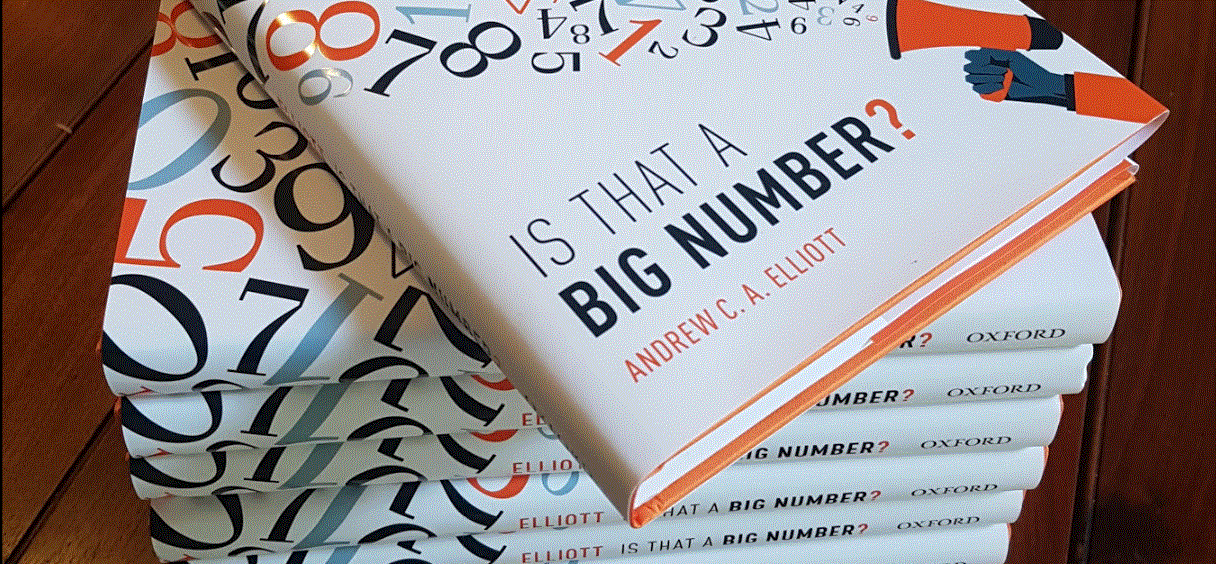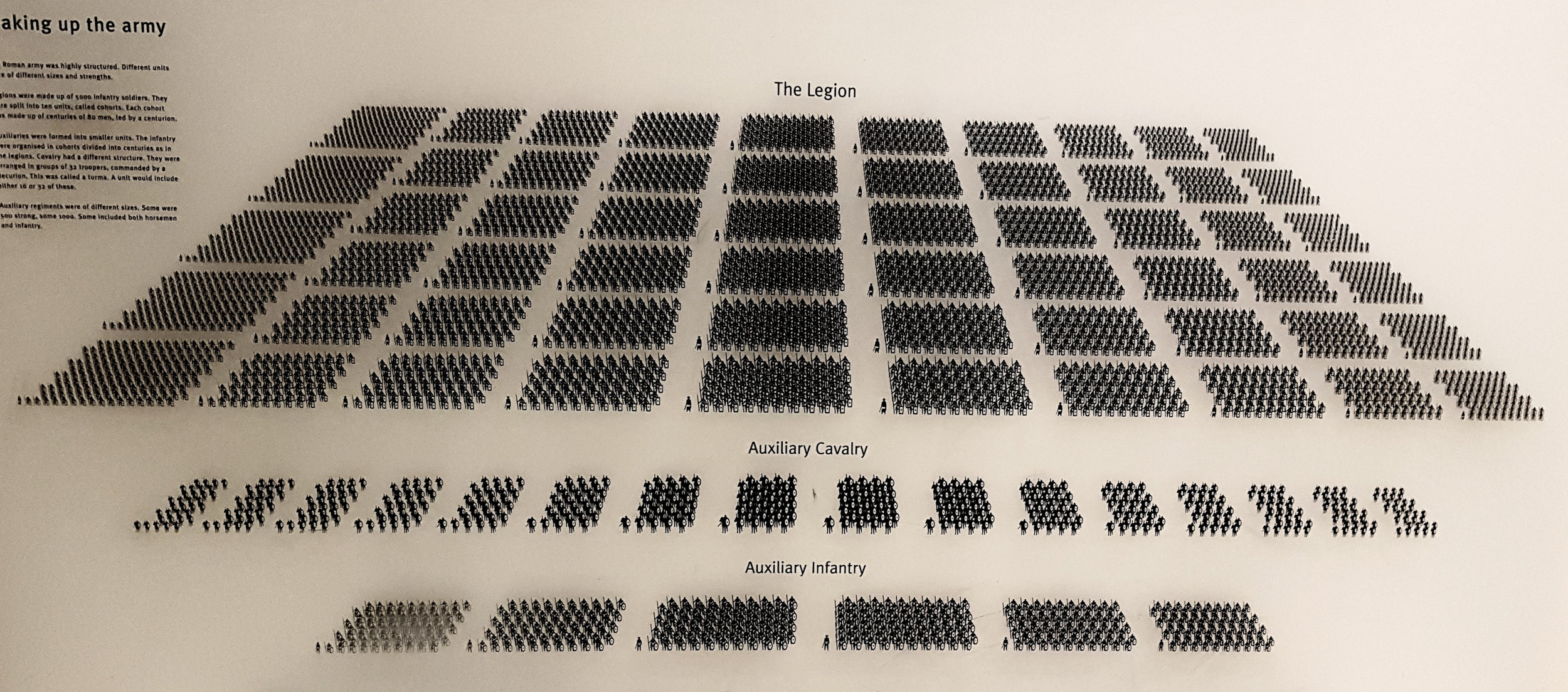How Many in a Legion?
Andrew Elliott
The Book of Mark recounts a story of Jesus meeting, in “the country of the Gaderenes”, a man said to be possessed by a demon. When Jesus asks the name of the demon, the answer comes: “My name is Legion; for we are many.” Let’s focus on that word legion, because this is the earliest recorded use of the word to simply mean a large number.
Roman legionaries marching, from the Column of Marcus Aurelius, Rome, Italy, 2nd century AD. Picture Credit Barosaurus Lentus
The word “legion” used here is a reference to the Roman military unit, the mainstay of the Roman army through the years of the Republic and the Empire. But how big is (or was) a legion? Well, as you might have guessed, it’s complicated.
At first, the Roman legion was the entire Roman army. The name comes from a root word meaning “picked”: we might say “drafted”, it’s everyone called up for military service. The sixth Roman king Servius Tullius, who ruled in the 6th century BCE, is said to have been the first to call for a regular census of the people. This census created the administrative infrastructure which allowed the raising of an army, the legion, in the numbers required. From the start, an important sub-unit of the legion, was the century, nominally 100 soldiers, in fact usually a somewhat smaller number. The officer in charge of a century was of course a centurion.
When the Romans rid themselves of kings, the governance of the Republic came under the authority of two consuls, each of whom had charge of an army, a legion. In times of need, additional legions could be called up. In the fourth century BCE, two further permanent legions were established so that each consul now had charge of two. The core troops of the legion were the heavy infantry, who were divided into three lines. The front line, the hastati, were the least experienced, and were organised into 10 maniples of 2 centuries each containing 60 soldiers, for a total of 1200. The same number of principes, experienced soldiers, made up the next line. And finally, a line of veterans, triarii, only to be used if needed, were organised as 10 maniples of 2 centuries of 30 soldiers each. So taking account of 1200 hastati + 1200 principes + 600 triarii makes around 3000 heavy infantry (plus, of course, their 60 centurions).
Light infantry, used as skirmishers, were not as formally ordered, and might have numbered 1200, while around 300 cavalry officers would add to the strength, to bring the overall legion total to around 4500. But things don’t always stay the same.
Display panel in the National Museum of Scotland.
The display panel shown above from the National Museum of Scotland (yes, there were Roman Legions in Scotland in the 1st and 2nd century CE) gives an excellent visualisation of the size of a Roman Legion, from a later period. The general Gaius Marius had reformed the organisation of the legion by around 100 BCE, and this display reflects his changes. The square blocks making up the bulk of the legion are the centuries, here shown 80-strong, and arranged into nine cohorts of six centuries each. The first (prima) cohort was exceptional, having only 5 centuries, but each twice as large as those in the remaining cohorts. By my reckoning the display shows a legion totalling 6193 men, with 528 horse.
So how big was a legion? More or less, somewhere between 3000 and 6000 strong. If we want a memorable number, a landmark number, 5000 will do.








